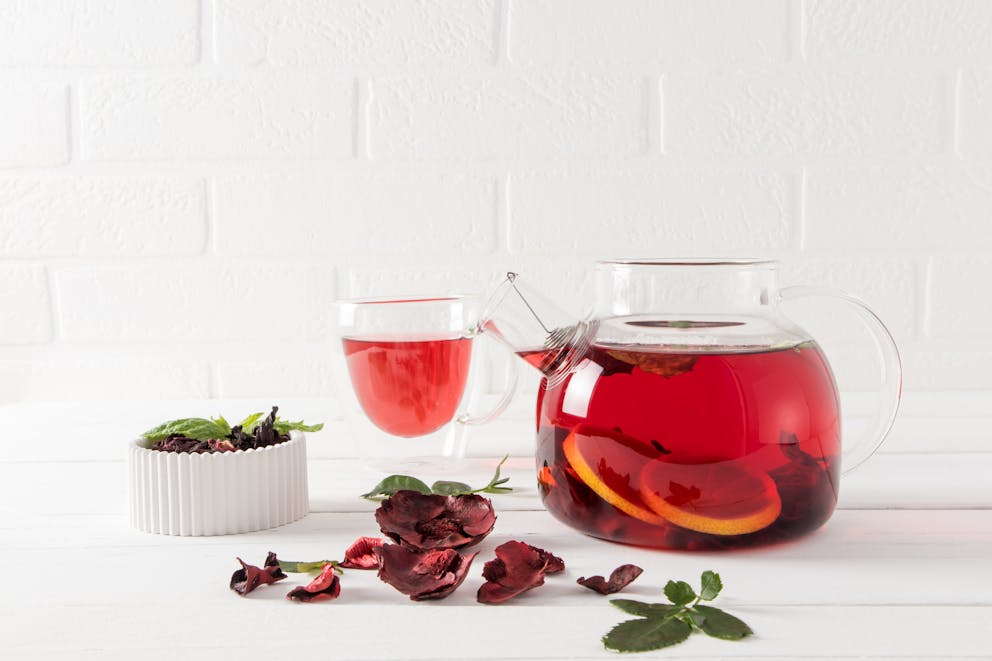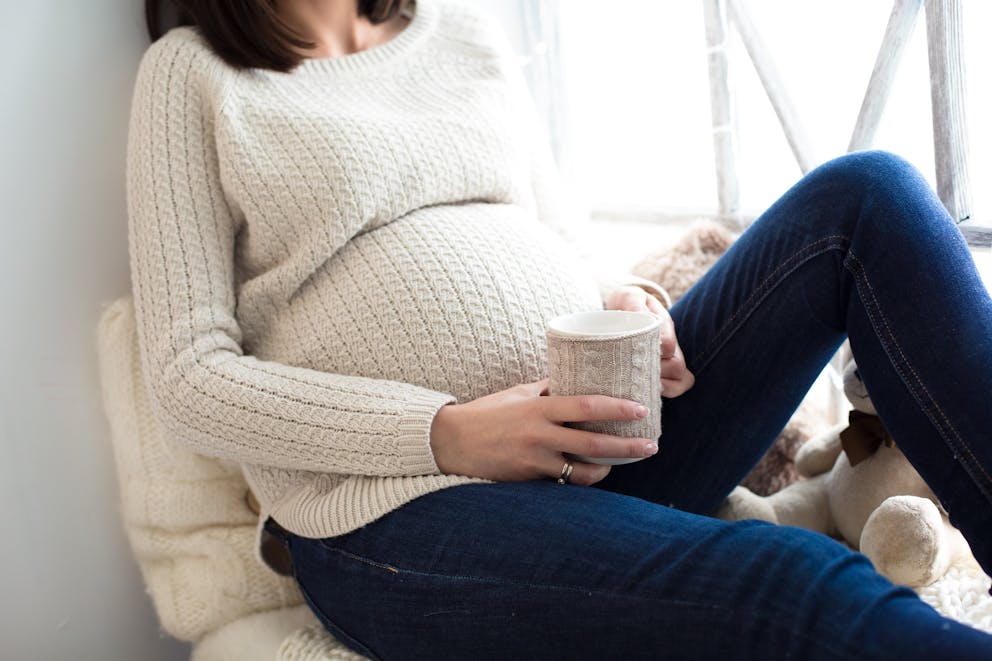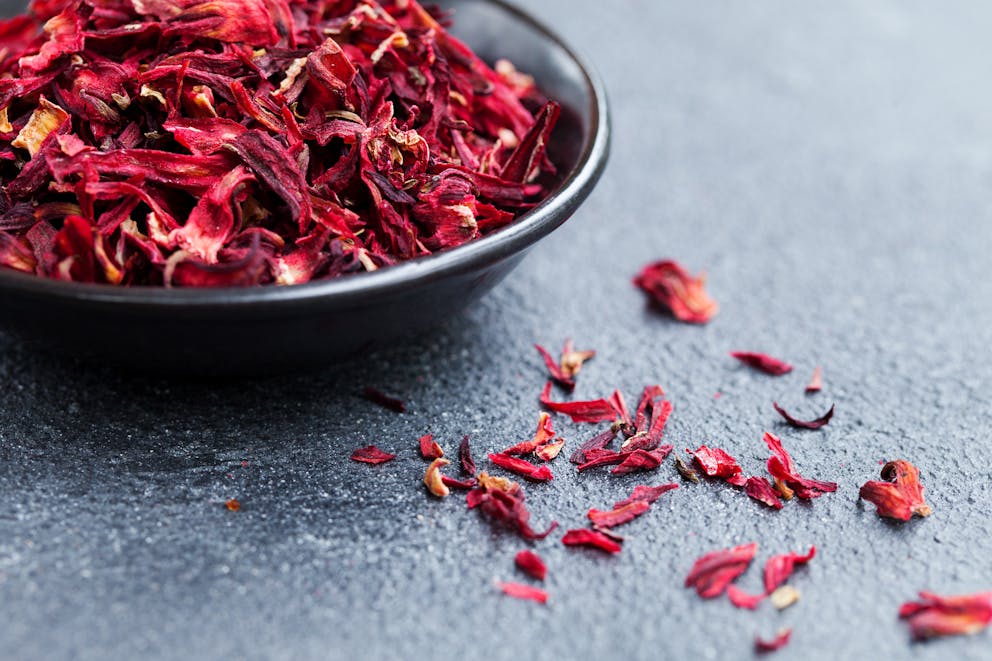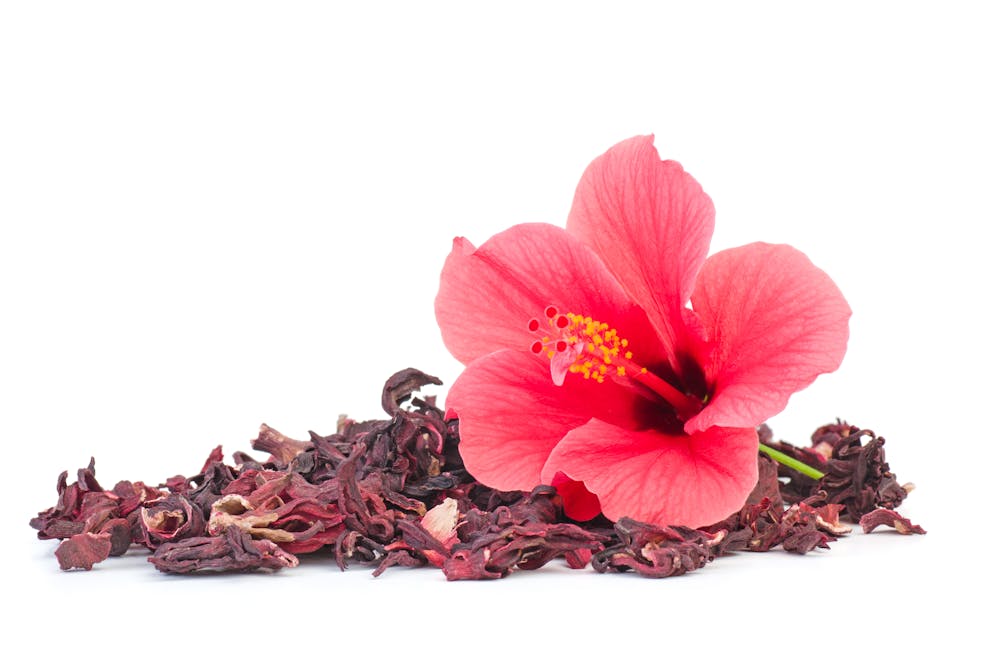How to Make Hibiscus Tea for High Blood Pressure

The First Signs of a Nutrient Deficiency
Learn how to recognize early symptoms related to specific nutrient deficiencies
Receive a downloadable list of early indicators your body is lacking key nutrients

The First Signs of a Nutrient Deficiency
Learn how to recognize early symptoms related to specific nutrient deficiencies
Receive a downloadable list of early indicators your body is lacking key nutrients

The First Signs of a Nutrient Deficiency
Learn how to recognize early symptoms related to specific nutrient deficiencies
Receive a downloadable list of early indicators your body is lacking key nutrients

The First Signs of a Nutrient Deficiency
Learn how to recognize early symptoms related to specific nutrient deficiencies
Receive a downloadable list of early indicators your body is lacking key nutrients

The First Signs of a Nutrient Deficiency
Learn how to recognize early symptoms related to specific nutrient deficiencies
Receive a downloadable list of early indicators your body is lacking key nutrients

The First Signs of a Nutrient Deficiency
Learn how to recognize early symptoms related to specific nutrient deficiencies
Receive a downloadable list of early indicators your body is lacking key nutrients

The First Signs of a Nutrient Deficiency
Learn how to recognize early symptoms related to specific nutrient deficiencies
Receive a downloadable list of early indicators your body is lacking key nutrients

The First Signs of a Nutrient Deficiency
Learn how to recognize early symptoms related to specific nutrient deficiencies
Receive a downloadable list of early indicators your body is lacking key nutrients

The First Signs of a Nutrient Deficiency
Learn how to recognize early symptoms related to specific nutrient deficiencies
Receive a downloadable list of early indicators your body is lacking key nutrients

The First Signs of a Nutrient Deficiency
Learn how to recognize early symptoms related to specific nutrient deficiencies
Receive a downloadable list of early indicators your body is lacking key nutrients

The First Signs of a Nutrient Deficiency
Learn how to recognize early symptoms related to specific nutrient deficiencies
Receive a downloadable list of early indicators your body is lacking key nutrients

The First Signs of a Nutrient Deficiency
Learn how to recognize early symptoms related to specific nutrient deficiencies
Receive a downloadable list of early indicators your body is lacking key nutrients

Keto vs. Non-Keto
Quickly compare keto-friendly foods with non-keto options for easy reference
Use this wallet card to make informed food choices while shopping or dining out
Identify fake keto foods and ingredients that you should avoid
Simplify decision-making with clear, practical guidelines

Keto vs. Non-Keto
Quickly compare keto-friendly foods with non-keto options for easy reference
Use this wallet card to make informed food choices while shopping or dining out
Identify fake keto foods and ingredients that you should avoid
Simplify decision-making with clear, practical guidelines

Keto vs. Non-Keto
Quickly compare keto-friendly foods with non-keto options for easy reference
Use this wallet card to make informed food choices while shopping or dining out
Identify fake keto foods and ingredients that you should avoid
Simplify decision-making with clear, practical guidelines

Keto vs. Non-Keto
Quickly compare keto-friendly foods with non-keto options for easy reference
Use this wallet card to make informed food choices while shopping or dining out
Identify fake keto foods and ingredients that you should avoid
Simplify decision-making with clear, practical guidelines

Keto vs. Non-Keto
Quickly compare keto-friendly foods with non-keto options for easy reference
Use this wallet card to make informed food choices while shopping or dining out
Identify fake keto foods and ingredients that you should avoid
Simplify decision-making with clear, practical guidelines

Keto vs. Non-Keto
Quickly compare keto-friendly foods with non-keto options for easy reference
Use this wallet card to make informed food choices while shopping or dining out
Identify fake keto foods and ingredients that you should avoid
Simplify decision-making with clear, practical guidelines

Keto vs. Non-Keto
Quickly compare keto-friendly foods with non-keto options for easy reference
Use this wallet card to make informed food choices while shopping or dining out
Identify fake keto foods and ingredients that you should avoid
Simplify decision-making with clear, practical guidelines

Keto vs. Non-Keto
Quickly compare keto-friendly foods with non-keto options for easy reference
Use this wallet card to make informed food choices while shopping or dining out
Identify fake keto foods and ingredients that you should avoid
Simplify decision-making with clear, practical guidelines

Keto vs. Non-Keto
Quickly compare keto-friendly foods with non-keto options for easy reference
Use this wallet card to make informed food choices while shopping or dining out
Identify fake keto foods and ingredients that you should avoid
Simplify decision-making with clear, practical guidelines

Keto vs. Non-Keto
Quickly compare keto-friendly foods with non-keto options for easy reference
Use this wallet card to make informed food choices while shopping or dining out
Identify fake keto foods and ingredients that you should avoid
Simplify decision-making with clear, practical guidelines

Keto vs. Non-Keto
Quickly compare keto-friendly foods with non-keto options for easy reference
Use this wallet card to make informed food choices while shopping or dining out
Identify fake keto foods and ingredients that you should avoid
Simplify decision-making with clear, practical guidelines

Keto vs. Non-Keto
Quickly compare keto-friendly foods with non-keto options for easy reference
Use this wallet card to make informed food choices while shopping or dining out
Identify fake keto foods and ingredients that you should avoid
Simplify decision-making with clear, practical guidelines
Hibiscus flowers are rich in antioxidants. They have been found to promote healthy blood vessels, and evidence suggests that drinking hibiscus tea may help lower blood pressure naturally.
Discover the health benefits of hibiscus and learn how to make hibiscus tea for high blood pressure.
What is hibiscus tea?
Hibiscus tea is typically made from dried flowers of the hibiscus plant, also known as hibiscus sabdariffa.
Hibiscus plants are native to tropical and subtropical climates, and their trumpet-shaped flowers are used for culinary and medicinal purposes in many parts of the world.
Hibiscus tea is known for its vibrant red color and refreshing taste. It has long been known to promote cardiovascular health and improve liver function.

Benefits of hibiscus tea for high blood pressure
Regularly drinking hibiscus tea may be particularly beneficial for individuals with hypertension, a cardiovascular disease characterized by elevated blood pressure.
Hibiscus flowers are rich sources of flavonoids and anthocyanins. These potent antioxidants are believed to stimulate the production of nitric oxide, a gaseous compound that helps relax and widen blood vessels.
“Relaxed blood vessels improve blood flow and lower resistance in the arteries,” explains Dr. Berg. “This ultimately lowers blood pressure and promotes cardiovascular health.”
In fact, research published in the Journal of Nutrition found that mildly hypertensive adults who drank eight ounces (240 ml) of hibiscus tea three times per day for six weeks significantly lowered systolic and diastolic blood pressure.
While further research is needed to confirm its role in cardiovascular health, hibiscus tea may be as effective in lowering blood pressure as conventional antihypertensive drugs, thereby reducing the risk of potential side effects and drug-induced nutrient deficiencies.

Recipe for Hibiscus Tea
Hibiscus tea, also known as sour tea in some regions, is just as easy to brew as other herbal teas.
Here’s a simple hibiscus tea recipe you can make at home.
Ingredients
1 Tbsp dried hibiscus flowers
8 oz (240 ml) boiling water
Instructions
Add dried hibiscus leaves to a cup or teapot and steep in boiling hot water for five minutes.
Strain the tea and allow it to cool until it reaches your desired temperature.
Enjoy!
You can also opt for an iced tea recipe and chill the hibiscus infusion in the fridge before consuming it throughout the day.
Hibiscus tea has a naturally tart flavor, and some people prefer to add some cinnamon or vanilla extract to balance its sharpness.
Teabags are a convenient alternative to loose hibiscus leaves, and it’s important to follow the instructions on the product label to achieve the best flavor and optimal potency of hibiscus tea.

How much hibiscus tea should you drink?
Hibiscus tea is naturally caffeine-free, and most people can safely consume several cups daily.
If you want to boost your antioxidant intake and promote general health, it’s generally recommended to drink one to two cups of hibiscus tea per day.
To manage hypertension, it’s best to aim for three cups of hibiscus tea daily. It can take up to two months of regular hibiscus tea consumption to see a reduction in blood pressure.

Potential risks of hibiscus tea
While hibiscus tea offers various health benefits, it’s crucial to be aware of the potential risks associated with its consumption.
It’s best to avoid hibiscus tea during pregnancy and while trying to conceive. Hibiscus can stimulate uterine blood flow and trigger menstruation, which may increase the risk of miscarriage during the early stages of the first trimester.
In addition, hibiscus tea can interact with blood pressure medication and lead to dangerously low blood pressure linked to fainting and severe dizziness.
It’s essential to consult a healthcare provider if you are taking antihypertensive drugs and are considering adding hibiscus tea to your daily routine.

Other benefits of hibiscus tea
In addition to its potent blood pressure-lowering properties, hibiscus tea has several other potential health benefits.
Here are four reasons why you should be drinking hibiscus tea regularly.
1. Nutritional powerhouse
Hibiscus is a rich source of vitamin C, folic acid, calcium, zinc, and various phytochemicals with potent antioxidant properties.
In fact, research published in The Journal of Dietary Supplements found that hibiscus contains more antioxidants than green tea, which is often hailed as one of the most antioxidant-rich beverages.
Antioxidants protect cells from the adverse effects of free radicals. These harmful metabolic by-products can cause cellular damage and impair normal cell functions, linked to increased risk of inflammation, chronic diseases, and premature aging.
2. Supports metabolic health and liver function
Drinking hibiscus tea may lower the risk of obesity and liver steatosis, also known as fatty liver.
It’s believed that flavonoids and polyphenols in hibiscus promote metabolic health by improving blood sugar control and cholesterol balance and boosting the liver’s ability to metabolize fats.
This study published in Food and Function summarizes, “Hibiscus extract reduced obesity, abdominal fat, and improved liver steatosis and could act as an adjuvant for preventing obesity and non-alcoholic fatty liver.”
3. Natural antibiotic
Hibiscus tea has traditionally been used as a natural remedy for various digestive and respiratory tract infections.
Its antimicrobial properties are linked to the high concentrations of antioxidants in hibiscus flowers, which may help eliminate bacteria and fungi by damaging their cellular membranes and causing microbial death.
Hibiscus has been found beneficial in managing infections caused by E. coli, Salmonella, and Candida, the main culprit for yeast infections and oral thrush.
4. Promotes kidney health
Hibiscus has mild diuretic properties that stimulate urine production, which can help prevent high oxalate kidney stones by aiding in the removal of oxalates and other waste products from the kidneys.

Key takeaways
Hibiscus has potent antihypertensive properties, and drinking three cups of hibiscus tea per day for six weeks may significantly reduce high blood pressure.
How to make hibiscus tea for high blood pressure? It’s easy!
Steep one tablespoon of dried hibiscus petals in hot water for five minutes. Strain the infusion and enjoy your hibiscus tea—hot or chilled!
FAQ
1. Can hibiscus tea lower your blood pressure?
Yes, regularly drinking hibiscus tea has been found beneficial in lowering high blood pressure.
Hibiscus is a rich source of polyphenols and antioxidants that help relax blood vessels, which can reduce arterial resistance and normalize high blood pressure.
2. How much hibiscus tea should I drink to lower my blood pressure?
Evidence suggests that consuming eight ounces (240 ml) of hibiscus tea three times per day improved high blood pressure in adults with mild to moderate hypertension.
3. How do I make hibiscus tea for high blood pressure?
Making hibiscus tea is easy!
Steep one tablespoon of dried hibiscus leaves in eight ounces of boiling water for five minutes. Strain the liquid and enjoy hibiscus tea hot or cold.
4. How many times a day should you drink hibiscus tea to lower blood pressure?
Research studies found that consuming three cups of hibiscus tea daily for at least six weeks can help lower diastolic and systolic blood pressure.
5. What should I avoid when drinking hibiscus tea?
Hibiscus tea is naturally caffeine-free and well-tolerated by most adults.
However, it’s not recommended during pregnancy as it may increase the risk of miscarriage and can cause dangerously low blood pressure in individuals with hypotension and people prone to fainting and lightheadedness.
6. Can you drink hibiscus tea while taking blood pressure medication?
It’s not recommended to consume hibiscus tea while taking blood pressure medication.
Hibiscus tea has potent antihypertensive properties and can lead to very low blood pressure if combined with blood pressure medication.
7. Is it safe to drink hibiscus tea daily?
Yes, hibiscus tea is generally well tolerated and considered safe for most adults.
However, pregnant women and those trying to conceive shouldn’t consume hibiscus tea, and individuals taking blood pressure medication should discuss the use of hibiscus with a healthcare provider to avoid dangerously low blood pressure, fainting, and dizziness.
Previous blog
Drinking Water Is NOT the Best Way to Stay HydratedTags

Popular
08/21/2024
55K views
02/23/2025
46.3K views
11/18/2024
277.5K views
03/18/2024
11/21/2022




